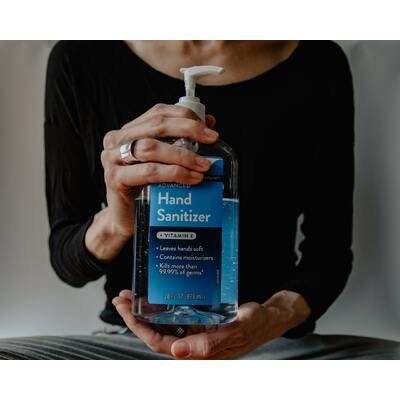How to Prevent Poisoning Risk When Using Hand Sanitiser
Date Posted:26 July 2022

Hand sanitisers are great substitutes for when there's no water and soap available. But how do you prevent poisoning risks?
As families try to prevent the spread of coronavirus disease, hand sanitiser appears to be everywhere (COVID-19). This, however, has resulted in an increase in accidental ingestions by children who have ingested the germ-killing liquid, which can be fatal. Because ethyl alcohol is the active ingredient in hand sanitisers, even a small amount of alcohol can cause alcohol poisoning or death in children.
The alcohol concentration in hand sanitiser ranges from 40 to 95 per cent, with most hand sanitiser products containing more than 60 per cent ethyl alcohol, which is a higher alcohol concentration than nearly all hard liquor. In comparison, beer contains 5 to 10% alcohol, while wine contains 10 to 15% alcohol.
Types of Alcohol in Hand Sanitisers
A lot of hand sanitisers contain alcohol or rubbing alcohol (ethanol, ethyl alcohol, or isopropanol, isopropyl alcohol). Loss of balance, sleepiness, low blood sugar, seizures, and coma are all symptoms of alcohol poisoning, which can be fatal.
Children and adults have also been poisoned after using methanol-containing hand sanitiser (also called wood alcohol, methyl alcohol, or methylated spirits). Methanol-containing products have been recalled because they can be toxic if swallowed or used repeatedly on the skin. It has the potential to cause everything from nausea and headaches to blindness, nervous system damage, and death. Another type of alcohol that should not be used in hand sanitisers is 1-propanol.
How much hand sanitiser is too much?
A hand sanitiser pump delivers about 2.5 mL of liquid. A blood alcohol level of 17.3 mg/dL would be expected if an average 2-year-old weighing 15 kg (33 lbs) ingested one pump of a 62 per cent ethanol-containing hand sanitiser, which is significantly lower than a toxic level of 80-100 mg/dL. To produce toxic effects requiring medical attention, the same child would need to drink approximately 4-5 squirts of the sanitiser. To produce significant toxic effects, clearly, more than a lick of hand sanitiser would be required.
Tips to Prevent Harmful Exposure to Hand Sanitisers
1. Check the label.
Before purchasing or using a hand sanitiser, check the label for a list of the ingredients, warnings, and precautions. To reduce the risk of injury from children drinking hand sanitisers, manufacturers should include bitter-tasting ingredients. This crucial step helps to keep children from consuming the product.
2. Keep hand sanitisers out of reach of children.
Hand sanitiser should be kept in the same cabinet as medicines and household products, which should be kept out of sight and out of reach of children. Do not leave hand sanitiser out after using it. When you're finished with it, put it away and out of sight.
3. Use of hand sanitiser should be monitored.
Make certain that your child only uses hand sanitiser when an adult is present. Apply a dime-sized amount to dry hands and rub hands together until completely dry when using hand sanitiser on yourself or your child. Children should be reminded to keep their hands away from their faces, particularly their mouths. This is good practice for preventing disease transmission and hand sanitiser ingestion.
4. Develop the habit of hand-washing.
Hand-washing with soap and water is the most effective way to clean hands. Most germs are removed from the hands using this method. Hand sanitisers should be used only when hand washing is not an option, such as when there is no water or soap available.
5. Discard hand sanitisers properly.
Recalled hand sanitisers should not be flushed or poured down the drain. If possible, these products should be disposed of in hazardous waste containers. If you are unsure, contact your local waste management and recycling centre.
6. Prepare for accidental poisoning.
Put the emergency number in your cell phone and post it near any landline phone and on babysitter instructions.

